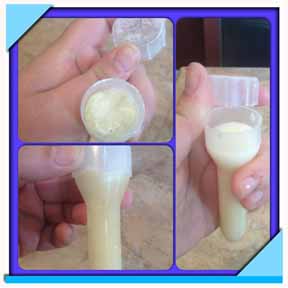Pre-Foaling Preparation! 30 Days Beforehand!I Am Ranch Miniature Horses is sharing with you what we do to maintain the health of our horses. This is not intended to direct you on how to care for your horse. The intent of this is only to share what we do, and raise questions for you. We advise you to consult your veterinarian before making any changes in your horse's health care. The information found on our website is not to supersede the advise of your veterinarian. I AM Ranch Miniature Horses cannot be held liable for the care of your horse(s). Watch a baby kicking inside of momma's belly. Enjoy this precious time of witnessing a miracle while you prepare for the big day.Read Blessed Are the Broodmares by V. Phyllis Lose and The Complete Book of Foaling by Karen E.N. Hayes, D.V.M.,M.S. Copy off pages of the book and put them in plastic sleeves to keep in the barn with you at time of foaling. Concentrate on learning the mare's structure and anatomy. You will want to be able to picture it all in your head when you are up to your elbows inside of a mare. Buy everything needed in your foaling kit. Copy our data collection chart to begin documenting your mare's progress Worm your mare within the month prior to foaling Vaccinate your mare. Make sure tetanus in included. Use only those with killed virus. Shave entire belly, up the sides and the rear legs. We do this to monitor the mare more easily, to make a clear path for the foal to find the teats. We also have been warned about hair colic. This occurs when a foal ingests hairballs which don't agree with their systems and a colic results. Straw - place lots of clean bedding in the stall. We put grindings below our straw to give the baby traction when it tries to stand up at first. Supplements and feed your mare well - This is the time of the greatest nutritional need for the mare and baby. There is a condition called 'Eclampsia' or 'Tetany' which results if the mare is not getting adequate nutrition at this time. This condition is most commonly seen later on in the pregnancy or in the early stages of lactating. It is important to keep her calcium levels up. If there is not enough food, the mare's nutrition goes to her growing baby first and she gets what is left over. Don't be afraid to give her "extra" food at the later stages of pregnancy. We also put our mares on mare/foal supplement. If there are any signs of the mare having a seizure after birth, CALL YOUR VET. One tip I read was to put a Tums between her gum and teeth to dissolve there (don't let her swallow whole) and the calcium within the Tums may help her in this stressful time. Set up your foaling barn. For some ideas, click here. We used cameras, foal buzzers and baby monitors...plus we made it look like Christmas in March! Keep your mare's tail wrapped and clean. Wash between the teats. As they fill up, any gunk that is between, can irritate and make your mare more uncomfortable than she already is.
Hook up your horse trailer and have it deeply bedded.
Need more reading?? Data Collection Chart is available to chart your mare's progression Click here for a foaling calculator Click here for a foaling kit list Click here for ideas of what to do 30 days prior to foaling Click here for a description of a redbag birth Click here for notes about dystocia during foaling Read product testimonials here Click here for our post foaling check list Click here for instructions on how to use Foal-Time Strips We have kept extensive foaling journals to help others.....Find them on the articles page
|
